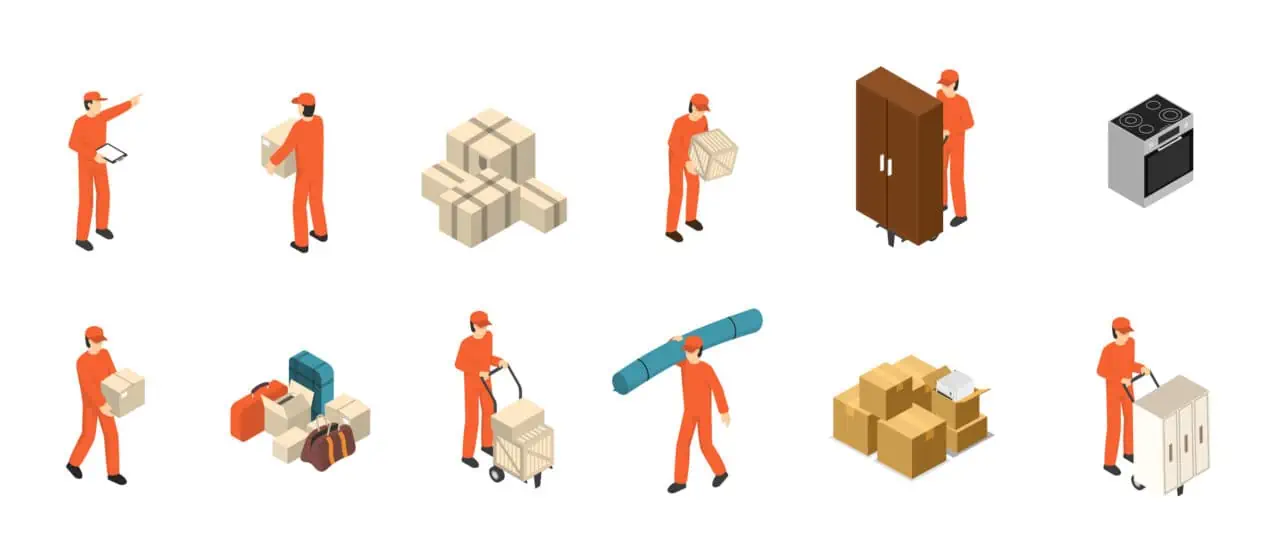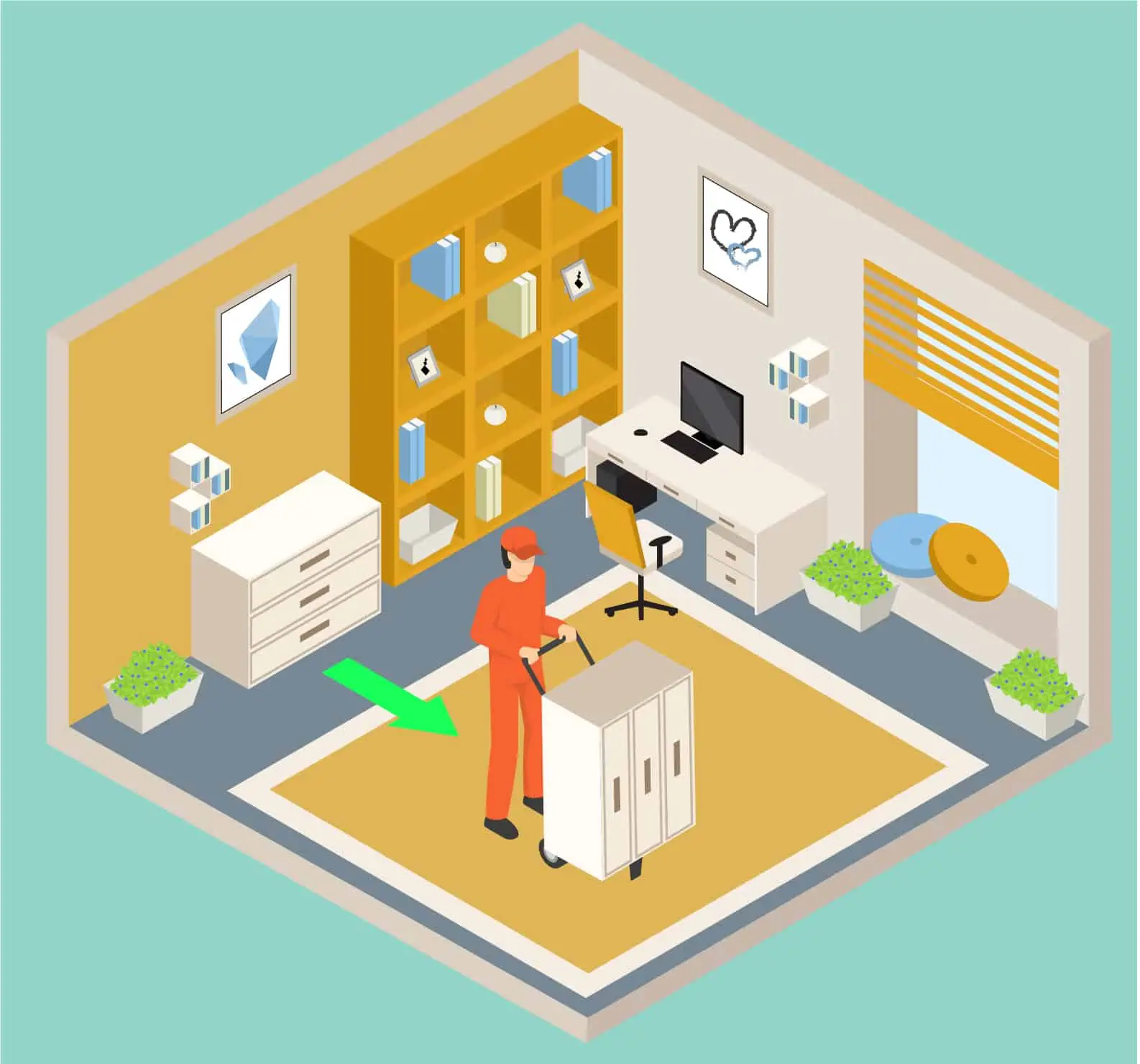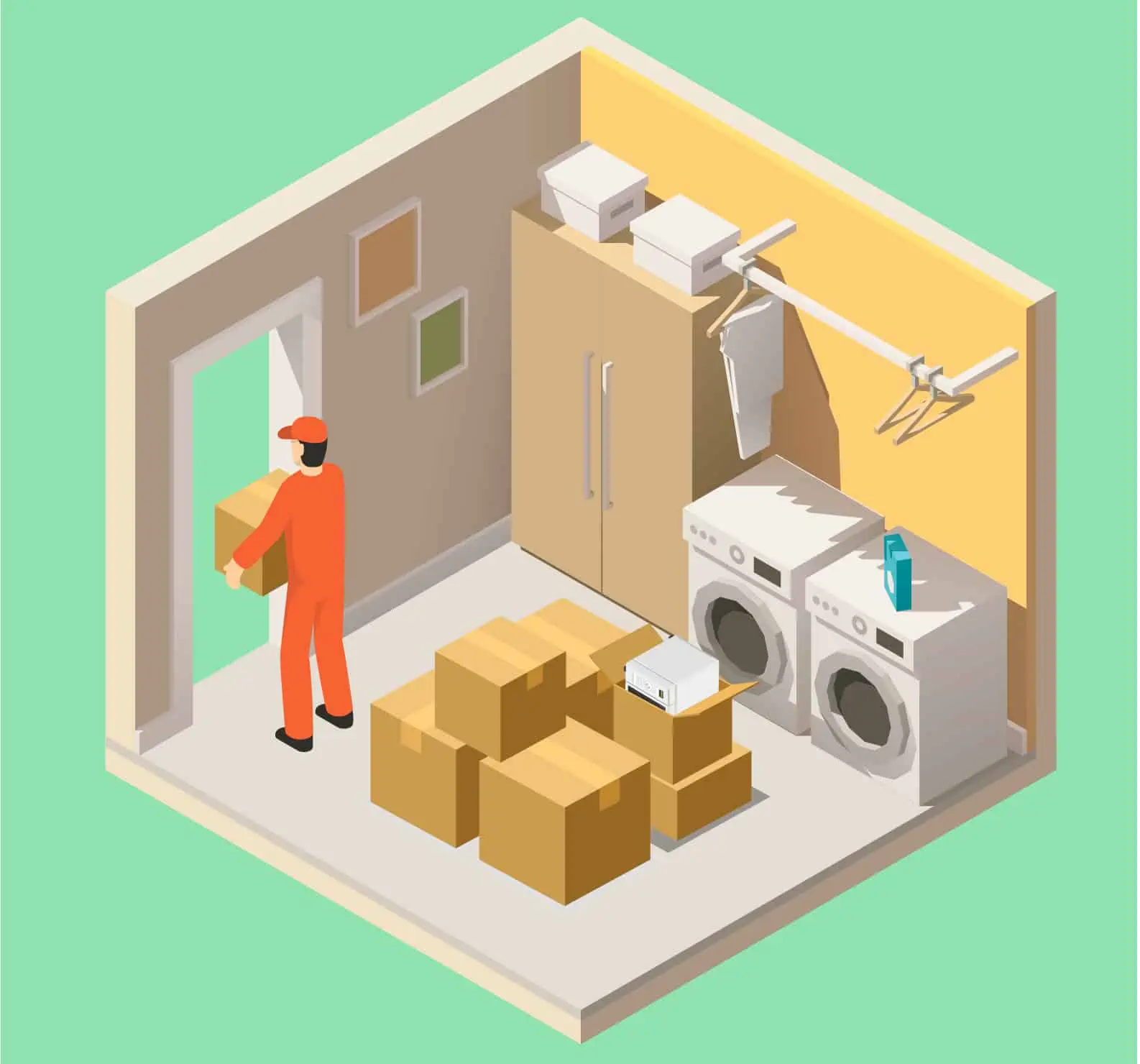A Jumbo Guide to Moving Really Big Stuff
Posted in: I'm a Mover, Pro Packing GuidesDo any of you guys have scars that remind you of something? Something crazy you did? Some incredible, life-affirming moment you experienced?
I do. Sort of. I have a scar on my chin that reminds me of a refrigerator, a hand truck and a set of stairs.
When it comes to moving heavy appliances, some things are not so obvious – until of course you get hit in the chin. This month we go over a few things to know before you start wrangling with that big shiny fridge.
How To Maneuver Popular Pieces of Furniture
Over the years I’ve had to move it all: big heavy dressers, armoires, tall fancy desks with glass-covered shelves, pianos, curios, china hutches, bookcases, arcade games, treadmills, entertainment units, even the occasional tanning bed and gun safe.
But even if I tried to cover them all, you guys would soon enough come across something new. So here are some tips on the more common, large pieces of furniture we all encounter.
Long Dressers
Long dressers often have to be stood on end to be maneuvered out the bedroom door and into the hallway. When we are trucking them, on end is pretty much our only option.
Setting the top of the dresser against the truck’s uprights makes most sense unless the dresser top has a lip that extends past the side of the dresser. (A dresser top made of sturdy, solid wood might stand up to the weight of the dresser, but personally I never liked taking that chance.) If the dresser top is wider than the rest of the dresser, put the back of the dresser against the truck’s uprights.
Tall Dressers
Tall dressers can often be hollow underneath, making it hard to set them on the plate of your hand truck since all that weight will be on that one edge. (This may be okay if the dresser is made of quality hardwood.) Armoires and dressers with legs pose a different problem: unless those legs are really short, or you tip that hand truck waaaay back, those legs are probably not going to clear the floor.
Even if they are hovering above the flat, even floors and hallways, those legs can catch on raised thresholds and, in a much more perilous situation, get slammed and broken and splintered. Our best option, if we can’t carry these items, is to truck them upside down on their flat top surfaces. However, they often have decorative woodworking on their tops. Be aware of this when trucking these items upside down.
One other tip for the same situation: know what is inside! Clothes may be fine upside down. Watches, jewelry and other small items may not be.
Tall Bookcases
Tall bookcases and entertainment units (usually) pose less of a problem since we empty them out before moving them. But these items are often taller than your average dresser or armoire. So in addition to watching out for walls and doorjambs and legs impacting the stairs, we need to keep an eye on the tops of these items. They’re even taller on a truck at an angle, so smacking their top edges on doorways and hanging light fixtures is easy to do when we forget to look up.
— Remember too that these wooden furniture items are more susceptible to nicks and scratches than metal heavy appliances. Padding them before setting them on a hand truck then becomes much more of a consideration. At the same time, ratcheting that hand truck strap too tight around that entertainment unit might crush it if it is not particularly sturdy. Stay aware. And please avoid ratcheting down pressboard items. Those puppies will crack and splinter faster than you can say IKEA.
Awesome Tips
Protip #1: Don’t EVER Forget About the Floor
Sliding, shimmying and nudging a heavy appliance is clearly bad for flooring. But even walking appliances can do some serious damage if you aren’t extremely careful. Take it slow and soft, so those little metal legs don’t gouge the linoleum or scratch the hardwood. Preventing accidents is always faster than fixing them.
Got strong legs of your own? In some cases, an appliance sits in a place where we can’t get at it from the sides.
When this is the case, tilt the appliance forward, rest the front side on your thighs and lift that puppy right off the floor. (Make sure you’ve unplugged and unhooked it!) Carefully walk backward to where you can get a hand truck under that washer or dryer. If it’s easier, have your buddy slide a four-wheeler underneath. Floor saved.
Refrigerators have wheels, so they are easy to pull away from the wall. But the floor underneath a fridge tends to get nasty. And all that crud can leave nicks, gouges and scratches on the floor if it gets caught under the fridge’s wheels. Roll that Frigidaire forward slowly… and when you hit any resistance tip the fridge forward (or backward) to lift it over whatever is down there.
Thinking of cleaning under the fridge before moving it? Not a bad idea, though you may not have much luck getting a broom under there. You might, however, be able to slide a broom handle or a yardstick into that tiny space, to swipe away anything bigger than a breadcrumb. Even so, roll cautiously.
Protip #2: Watch the Appliance Bits
Some (Many? Most?) of you probably pad your appliances before trucking them to protect the appliance. But some movers prefer to wait until the appliance is on the truck to wrap it up. It can be challenging padding a large appliance, as that pad can easily slide around, taking the strap with it and making your load unstable. And ratcheting that strap too tightly can pull a fridge’s door out of alignment.
But metal on metal is never a good scenario. That’s why some guys like to pad their hand trucks with a blanket or a furniture pad. (Keep the strap/ratchet mechanism free!)
If the backside of your fridge has fragile parts that might suffer damage under the weight of that fridge, truck it from the side opposite the door hinges. This way the door doesn’t fall open while you’re rolling (assuming the hand truck’s strap isn’t holding it closed).
If the fridge has those side-by-side doors, tie the door handles together or, if you have one, slap a big old moving band around the fridge.
No door handles and no big old moving bands? Consider shrink-wrapping the unit around the middle to keep the doors shut tight. That shrink wrap will also help keep the hand truck’s strap in place.
Extra bits of advice: If the fridge does have protruding handles, make sure that strap goes under (i.e., through) the refrigerator’s handles – not over them. And mind those metal buckles! Those suckers can easily scratch the surface of your customers’ appliance.
Protip #3: “Extra Parts” Are Bigger Than They Seem
Aside from electrical cords, heavy appliances can have hoses, water lines, gas lines and air tubes sticking out the back. Tape or otherwise secure those cords. Remove whatever hoses, lines and tubes you can, to prevent them from getting damaged during loading. If you can’t remove them, keep them from getting pinched and crushed between the appliance and the hand truck.
Leave No Hose Behind!
Store whatever parts you’ve removed from the back of the appliance right inside the appliance – wrapped well, of course – so nothing gets lost. Remove and wrap refrigerator shelves, and store those inside the unit as well. Remember: Those parts and pieces can get damaged or do damage if they bounce around too much inside that appliance. In other words, we really do mean it when we say wrap them well.
Ovens, washers and dryers can have knobs that stick out. Be aware. Cover them up with padding. Consider taping a strip of cardboard over them for extra protection and as a reminder that something is under there.
Knobs can sometimes be easily removed.
It’s a good idea to alert the customer before you start taking them off for a couple of reasons. One, the customer might not want us dismantling their controls, and two, even if they are okay with it they’ll want the chance to remember or even take a picture of the placement and position of all those knobs.
Protip #4: Prepare Your Customers
Customers are busy people. They are not moving experts. Offer them some advice if you want to increase your chances of a totally smooth move. It’s no use complaining about a clueless customer: Why do you think they hired you for? With that in mind, here are some moving tips you may want to forward to your customers.
- Disassembly required? Make sure the doorways along your path are wide enough for your appliance.
- Floors need to be protected with rug runners, cardboard, Masonite, whatever. Let them know whether you provide those or not.
- Empty, defrost and dry out the refrigerator/freezer ahead of time.
- Have a qualified technician unhook the gas stove/oven.
- Clean all appliances, particularly backsides, stovetops and around any air vents. No one wants to bring dust, dirt and grease into their new home.
- Unhook and drain water lines and hoses.
- Don’t wait until moving day to do laundry!
The Long and Short of It All
Common sense goes a long way in trucking large items safely. By the same token, common sense is much more common in hindsight.
In other words, while I’ve got nothing but a faint scar on my chin to show for all the appliances and large pieces of furniture I’ve handled, this doesn’t mean none of my hundreds of customers have no visible reminders of their moves.
Yes, I speak from experience in all of this – in hopes that you won’t have to!











